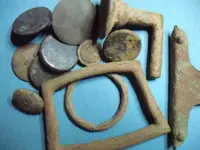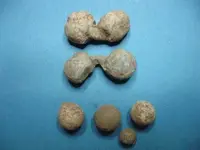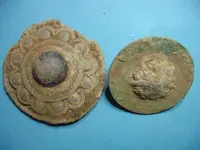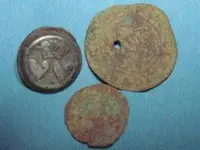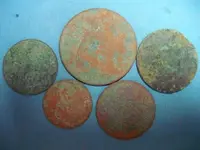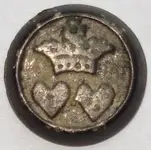shaun7 said:
Silver Searcher said:
shaun7 said:
Now i'm confused

That link showed the exact thing and said 17th c!
Was it just a popular design or should I just go to bed now

This one's very similar to yours shaun

Two hearts sumouted by crown...Circa mid 17thc-mid 18thc.
Frequently associated with the Restoration of Charles11(1660) or his mariage to Catherine of Braganza (1662). The association is not certain.
Cheers SS

Same as the one on the link Cru posted

Same type different picture.
SS, thanks for reminding me of the story.
The issue I have with the association is that if you put this cufflink in amounst other 17th century buttons it looks out of place. Put it with known 18th C buttons & cufflinks & it looks similar including its construction.
In Brian Read's latest book he discusses these cufflink links:
'Thames Mudlarks have recovered numerous metal cuff-links from stratified layers of the Thames Foreshore in London'..........................'evidence suggests that cuff-links first became fashionable around the beginning of the last quarter of the 17th century' ie. 1675
'
Cufflinks bearing this devise (crown above 2 hearts)
are invariably associated with King Charles IIs Restoration in 1660 or his Marriage to Catherine of Braganza in 1662, assignations which the London evidence possibly refutes'.
So this grey area, opens a nice loop hole for those wishing to sell what
I believe to be a relatively common 18th C cufflink for a better price as a Charles II type.
2 Other books say 18th C, I'm most happy with this, unconfortable with late 17th. However, I could be wrong









